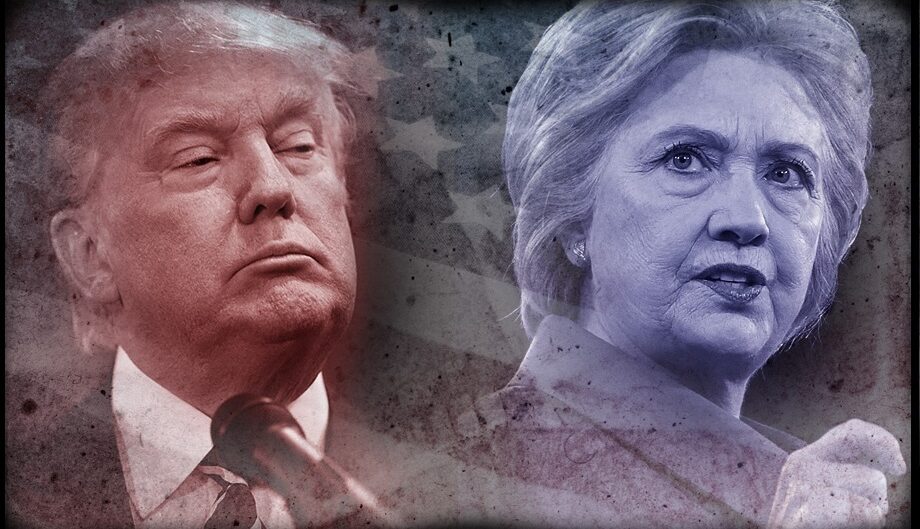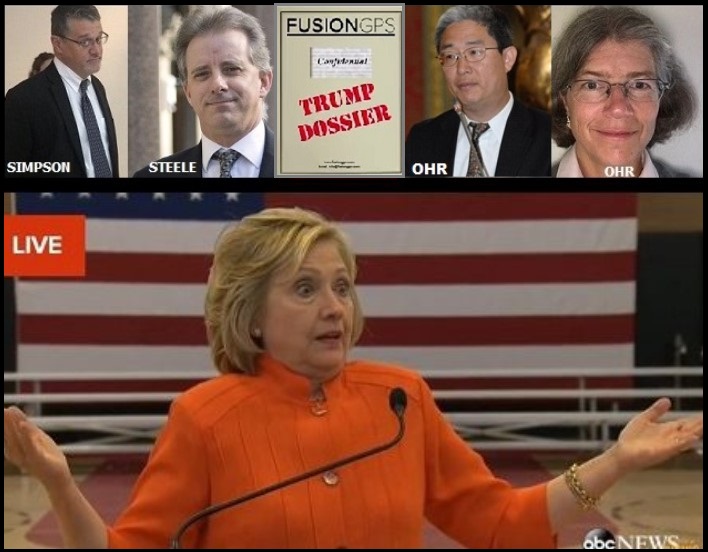A Different Take on the Dismissal of the Trump v Clinton Lawsuit
To accept a bigger picture is often to accept the foundation of what is present is not what it appears.
Recently a Florida judge dismissed the lawsuit brought by President Trump against Hillary Clinton. [65-page Ruling Here] The media have enjoyed ridiculing Trump by using the words of the judge who dismissed the case. As noted by the Washington Times, “Judge Donald M. Middlebrooks, a Clinton appointee, said Mr. Trump’s filing was too lengthy, detailing events that “are implausible because they lack any specific allegations which might provide factual support for the conclusions reached.”

Pay attention to the framework underpinning Middlebooks’ opinion. I have been reluctant to write about the decision to dismiss the lawsuit of President Trump against a multitude of conspirators, including Hillary Clinton, for two reasons.
First, because when I originally read the 108-page lawsuit filed in March, it took me a few moments, and then I realized this was not a lawsuit; this was a legal transfer mechanism created by lawyers to establish a proprietary information silo. Second, because I do not want another ridiculous subpoena from DC simply because they can’t fathom how any outside entity could solve a puzzle without insider assistance. As to the former, I have prayed on it and come to the opinion it’s worth sharing. As to the latter, it’s just another waste of taxpayer funds, but whatever – the truth has no agenda.
So, here’s a totally different take on the issues surrounding the Trump -v- Clinton lawsuit, which -from the outset- I always believed was going to be dismissed because suing all of those characters under the auspices of a civil RICO case was never the objective. However, in the aftermath, the silo created by the lawsuit is also grounded upon attorney-client privilege, a legal countermeasure to a predictable DOJ-NSD lawfare maneuver, which unfolded in the Mar-a-Lago raid and ongoing issues.
 In March 2022 President Trump filed a civil lawsuit against: Hillary Clinton, Hillary for America Campaign Committee, DNC, DNC Services Corp, Perkins Coie, Michael Sussmann, Marc Elias, Debbie Wasserman Schultz, Charles Dolan, Jake Sullivan, John Podesta, Robby Mook, Phillipe Reines as well as Fusion GPS, Glenn Simpson, Peter Fritsch, Nellie Ohr, Bruce Ohr, Orbis Business Intelligence, Christopher Steele, Igor Danchenko, Neustar Inc., Rodney Joffe, James Comey Peter Strzok, Lisa Page, Kevin Clinesmith and Andrew McCabe. [108-Page Lawsuit Here]
In March 2022 President Trump filed a civil lawsuit against: Hillary Clinton, Hillary for America Campaign Committee, DNC, DNC Services Corp, Perkins Coie, Michael Sussmann, Marc Elias, Debbie Wasserman Schultz, Charles Dolan, Jake Sullivan, John Podesta, Robby Mook, Phillipe Reines as well as Fusion GPS, Glenn Simpson, Peter Fritsch, Nellie Ohr, Bruce Ohr, Orbis Business Intelligence, Christopher Steele, Igor Danchenko, Neustar Inc., Rodney Joffe, James Comey Peter Strzok, Lisa Page, Kevin Clinesmith and Andrew McCabe. [108-Page Lawsuit Here]
When I was about one-third of the way through reading the lawsuit, I initially stopped and said to myself this is going to take a lot of documentary evidence to back up the claims in the assertions. Dozens of attachments would be needed and hundreds of citations to the dozens of attachments would be mandatory. Except, they were not there.
After reading further, while completely understanding the background material that was being described in the filing, I realized this wasn’t a lawsuit per se’. The 108-pages I was holding in my hands was more akin to legal transfer mechanism from President Trump to lawyers who needed it. The filing was contingent upon a series of documents that would be needed to support the claims within it.
Whoever wrote the lawsuit had obviously reviewed the evidence to support the filing. However, the attachments and citations were missing. That was weird. That’s when I realized the purpose of the lawsuit. In hindsight, things became clear when the DOJ-NSD raided the home of Donald Trump, and suddenly the motive to confiscate the documents that would be the missing lawsuit attachments and citations surfaced.
With the manipulative, and I say intentional, “ongoing investigation” angle of the John Durham probe essentially blocking public release of declassified documents showing the efforts of all the lawsuit participants (Trump-Russia Collusion Hoax), President Trump needed a legal way to secure and more importantly share the evidence.
Think of it like the people around Trump wanting to show lawyers the evidence in the documents. However, because of the construct of the lawfare being deployed against Trump, any lawyer would need a *reason* to review the evidence. The Trump -v- Clinton et al lawsuit becomes that ‘reason.’
The “documents” (classified or not) are reviewed by lawyers in preparation for the lawsuit. This is their legal justification for reviewing the documents. In essence, the lawsuit is a transfer mechanism permitting the Trump legal team to review the evidence on behalf of their client, former President Donald Trump.
Once the formation of the lawsuit is established, the retainer and acceptance of the lawyers to represent their client cemented, the legal counsel, discussion and information within legal duties/obligations of those who represent the plaintiff (Trump) becomes an information silo. In addition to previous executive privilege established by President Trump himself; outside government there is now another silo to defend against the motives of the Lawfare crew (DOJ), the attorney-client privilege.
The lawsuit itself is the transfer mechanism permitting sharing of the documents and providing legal cover for the reviewers (lawyers). The details within the 108-page filing constitute the claims of the plaintiff in the lawsuit, which were established by the evidentiary documents later seized by the DOJ and FBI raid on Mar-a-Lago.
“Judge Donald M. Middlebrooks, a Clinton appointee, said Mr. Trump’s filing was too lengthy, detailing events that “are implausible because they lack any specific allegations which might provide factual support for the conclusions reached.”
There were no attachments and/or citations to the documentary evidence in the 108-page filing, because there was a legal risk to citing evidence with a status in dispute by the corrupt people in Main Justice and the FBI. Secondarily, there was an obstruction risk to the President, if his legal team was to publish citations that were part of an ongoing investigation (Durham). However, this doesn’t negate the value of constructing the information silo, an attorney-client privilege.
If the documents seized by the FBI were part of the lawsuit established by President Trump and his legal team via Trump -v- Clinton, then the material seized is all attorney client work product. Lawfully obtained, constitutionally declassified and legally protected material.
This is where the ‘special master’ will play a key role.
Keep watching.






Post a Comment